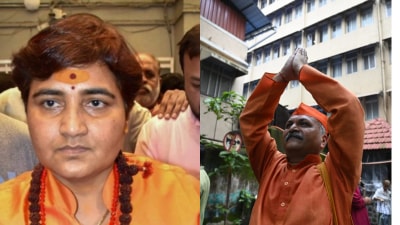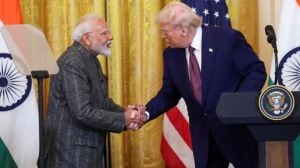Pagdi Sambhal Jatta: In Bhagat Singh’s ancestral village, how NRI family from Canada is remembering his inspiration
Canada-based family installs Ajit's Singh's statue, says, 'he was among the first anti-British voices from Punjab, also deserves to be remembered'
 The nearly 8 feet tall statue. (Express Photo)
The nearly 8 feet tall statue. (Express Photo)Walking past the lanes of Khatkar Kalan village in Nawanshahr district of Punjab, where every corner proudly speaks of its association with the beloved martyr Bhagat Singh, an NRI family has ensured that the man who was his forever inspiration, is also remembered the way he deserves to be.
When one visits Bhagat Singh’s ancestral village, which is thronged by people from across the world, it is hard to miss the nearly 8 feet tall statue of a turbaned Sikh man, handsomely dressed in a formal suit holding a book in hand. Perched on the rooftop of a house at the height of at least 30 feet, the plaque under it reads: “Sardar Ajit Singh Sandhu, Chacha Shaheed-e-Azam Bhagat Singh.”
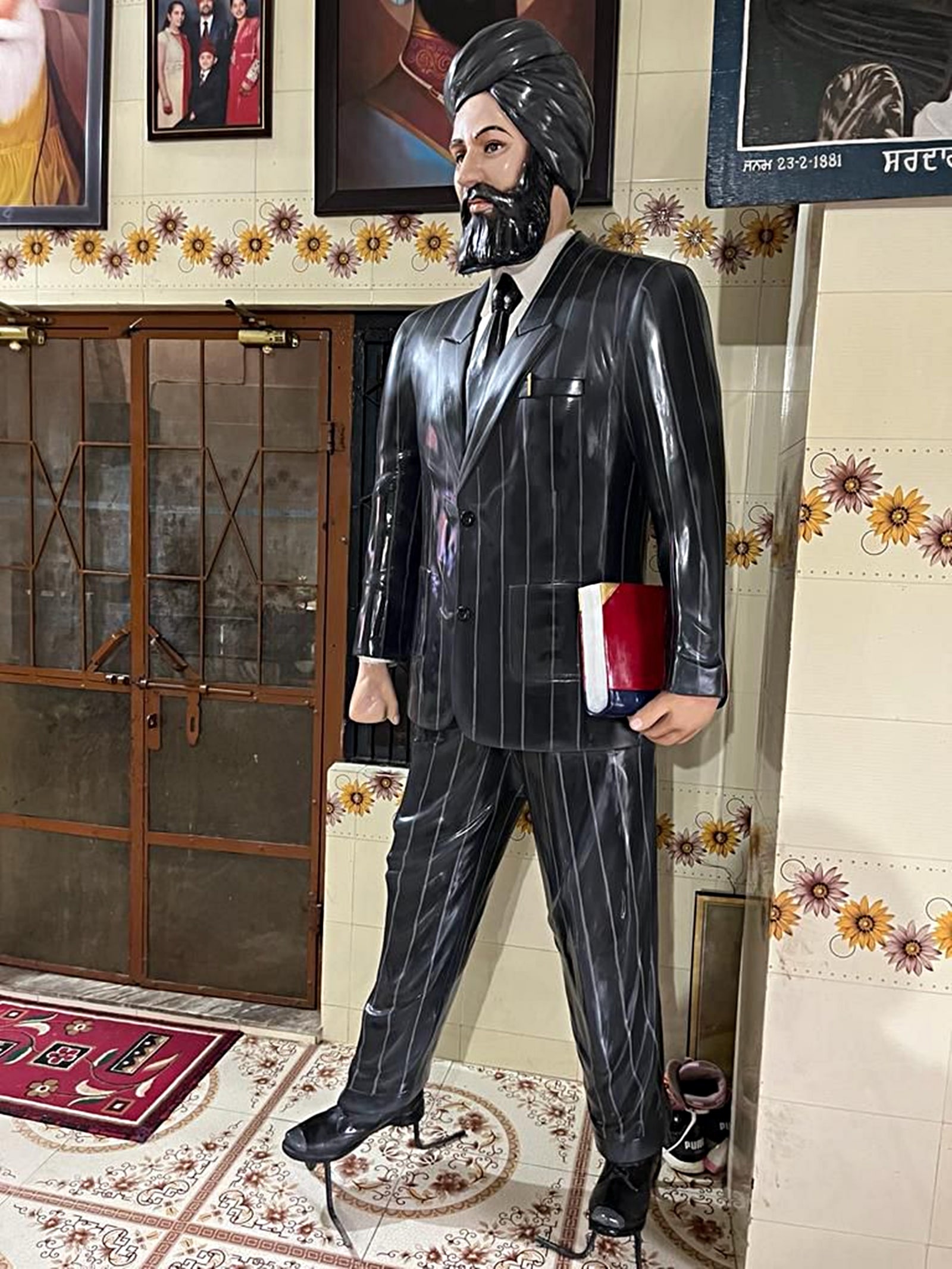 The statue which has been installed by the NRI family. (Express Photo)
The statue which has been installed by the NRI family. (Express Photo)
The architect of “Pagri Sambhal Jatta movement” against anti-farmer laws of the British government that had sent rumblings in the British Empire back in 1907, Ajit Singh was a huge inspiration for Bhagat Singh, who was his elder brother Kishan Singh’s son. After living in-exile for 38 years and fueling the country’s freedom struggle from off-shores, Ajit Singh had returned to India in 1946. At the age of 66, he died in Dalhousie on August 15, 1947, the day India got independence.
Canada-based Balbir Singh (76), a native of Khatkar Kalan who has installed the statue atop his house told The Indian Express that Ajit Singh’s sacrifices were also supreme.
“Everyone remembers Bhagat Singh, but not Ajit Singh who too deserves to be remembered as he was among the first anti-British voices from Punjab,” says Balbir, whose house mostly stays locked after they moved to Canada but catches the eyes of visitors due to the statue. He says that he wanted to place the statue outside the family’s ancestral house in the village (now a protected monument under the Punjab government) so that all visitors could see it, but couldn’t get administration’s permission.
“We were told that only the government can make additions to a protected monument so I installed it on the rooftop of my own house. Ajit Singh not only spearheaded ‘Pagri Sambhal Jatta movement’ but also motivated thousands of youths to join Azad Hind Fauj of Subhash Chander Bose,” says Balbir.
Born on January 23, 1881, Ajit Singh worked among the sick and starving people along with his brother Kishan Singh. He founded the Bharat Mata Society (Mahboobane Watan in Urdu), an underground organisation with other patriots such as Mahashay Ghasita Ram, Swaran Singh and Sufi Amba Prasad as its active members, to rekindle the fire of 1857 mutiny. The society started publishing anti-British literature and newspapers, including Bharat Mata, India (in English), Peshwa (in Urdu), and Punjabi. Even as these publications were seized by the British, it only fueled the anti-British sentiment.
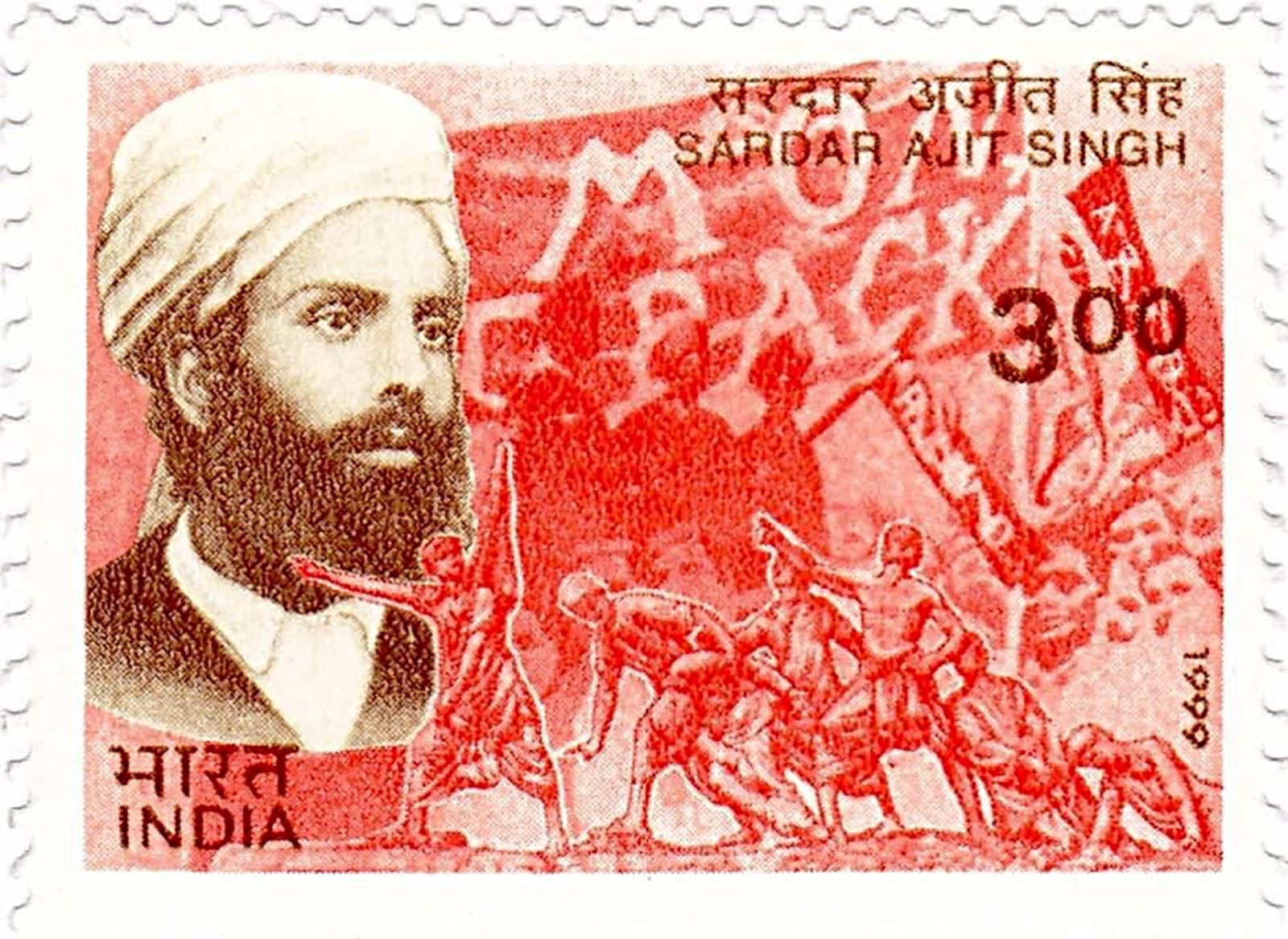 The stamp which was issued by the government of India in honor of Ajit Singh. (Express Photo)
The stamp which was issued by the government of India in honor of Ajit Singh. (Express Photo)
After the British enacted anti-peasant laws by imposing heavy taxes on poor farmers and snatching their land ownership rights by unlawful means, Ajit Singh organised several protest rallies. The British saw his action as a re-run of the 1857 rebellion and ordered a ban on his speeches but that too backfired.
In one such rally at Lyallpur on March 3, 1907, Banke Dayal, the editor of the newspaper, Jhang Syal, recited, “Pagdi sambhal Jatta, Pagdi Sambhal oye.. Hind hai tera mandir, usda pujari tu.. ranjha tu desh hai heer” (Take care of your turban, oh jatt! India is your temple and you are its worshipper.. love your country as Ranjha loved Heer), which became the symbol and soul of Ajit Singh’s movement.
In his autobiography “Buried Alive”, Ajit Singh mentioned that Dayal’s poem became so popular among farmers that they mistook it as his creation. “It was heard everywhere in Punjab resounding the skies. People mistook it as mine,” he wrote.
Exiled to a jail in Myanmar (then Burma) along with Lala Lajpat Rai in 1907, Ajit Singh resumed his anti-British movement after his release which again led to a warrant being issued against him. In early 1909, Ajit Singh them moved to Persia (now Iran) and changed his name to Mirza Hussain Khan. He later travelled to France, Russia, Turkey, Germany, Brazil among others and founded Indian Revoluti-onary Association (Bhartiya Krantikari Sangh). In 1918, he connected with the Ghadar Party in San Francisco. In 1939, he returned to Europe and later on helped Bose in his mission in Italy.
After Italy’s defeat in the second World War, Ajit Singh was arrested by the allied forces on May 2, 1945. He was incarcerated in a series of different prisons in Italy and Germany. When the news of his deteriorating health reached India, voices were raised for his release and extradition to India. In September 1946, when the interim government had already taken control, Ajit Singh’s old comrades and many Congress leaders began urged Nehru for demanding his release. After his return to India, he visited Delhi where he deliberated upon the country’s future with Nehru.
More than a century later, Ajit Singh and Bhagat Singh continue to be invoked by farmers and labourers while fighting for their rights. In massive farmer protests against the Centre’s anti-farmer laws, their slogans “Pagri Sambal Jatta” and “Inquilab Zindabad” had spearheaded protests against the government.
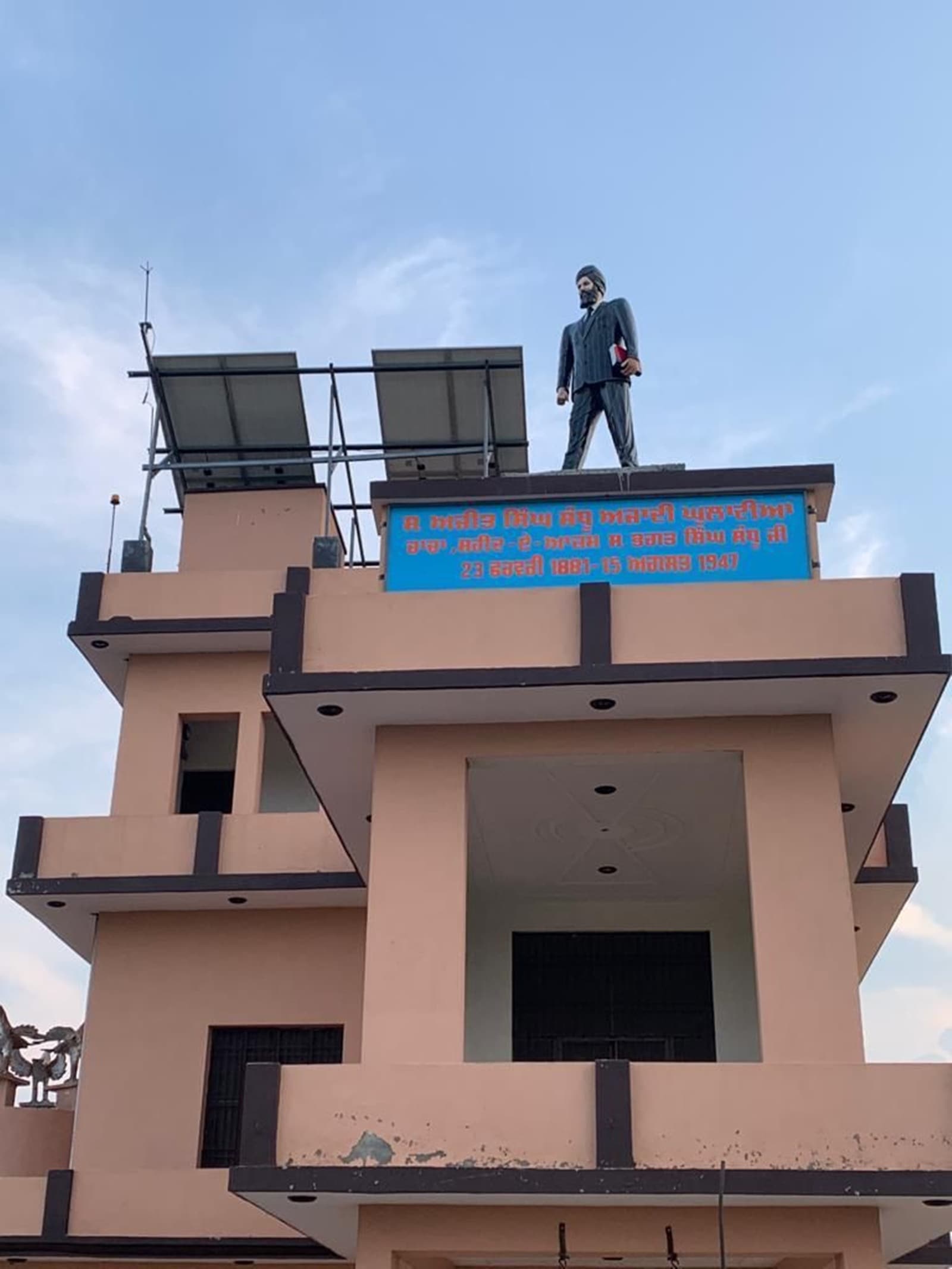 The statue, at height of almost 30-ft, catches everyone’s eyes. (Express Photo)
The statue, at height of almost 30-ft, catches everyone’s eyes. (Express Photo)
Professor Chaman Lal, an eminent researcher on Bhagat Singh, says that fighting for the rights of suppressed classes was in the blood of Bhagat Singh. “His uncle Ajit Singh had led the fight against the British when peasants were drowned in debt and were being heavily taxed by the government.”
In his last message in April 1947, Ajit Singh had said: “India urgently needs social and political revolutions—something we initiated in the beginning of this century. The responsibility now falls on your shoulders to take it to its conclusion. … I wish that India’s youth should emulate martyr Bhagat Singh—that with the cry of Inquilab Zindabad (Long Live Revolution) on their lips, they would not hesitate to sacrifice their lives for the cause of the revolution. ..Do not cease till there is ignorance, injustice and hunger in this country.”



